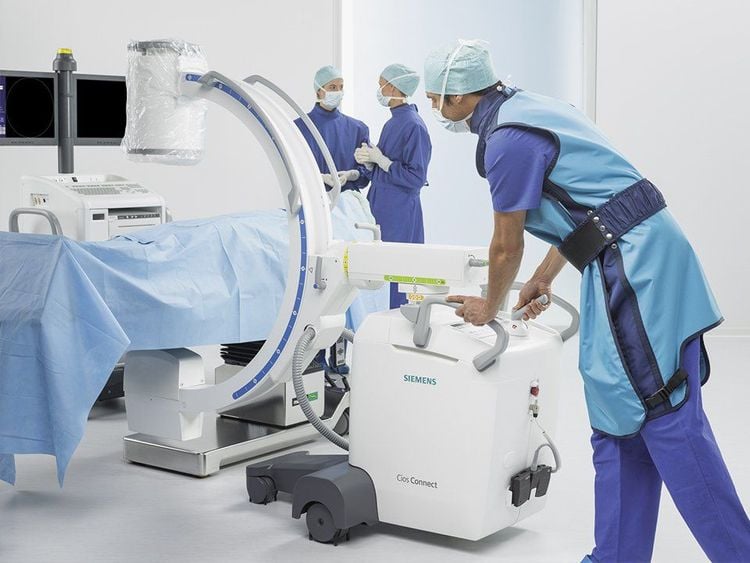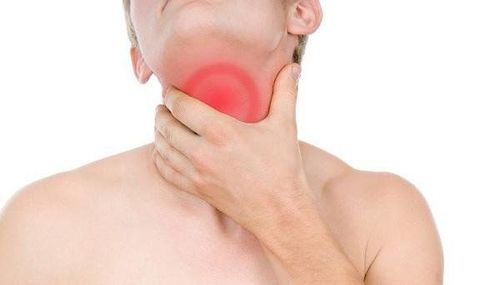This is an automatically translated article.
The article was consulted with Specialist Doctor I Dong Xuan Ha - Gastroenterologist - Department of Medical Examination & Internal Medicine - Vinmec Ha Long International Hospital.Duodenal catheterization is the procedure of inserting a tube through the nose or through the mouth into the duodenum to collect samples, feed by bringing food down to the duodenum when the stomach has problems such as tumors causing incomplete stricture. pyloric orifice or as part of the manipulation of other procedures. To ensure accuracy, duodenal catheterization is usually performed under C-ARM guidance.
1. What is C-ARM-guided duodenal catheterization?
Duodenal catheterization is the procedure of inserting a tube through the nose or through the mouth into the duodenum to collect samples for testing and feeding, this can also be part of the manipulation of other procedures. Placing a duodenal catheter is simple, but requires experience and ingenuity of the performer. For accurate duodenal catheterization, this procedure is usually performed under the guidance of a fluorescent screen (C-ARM).C-ARM is an X-ray based imaging device that enhances images in the operating room. The device has a C-arm shape, so it is named C-ARM. This is a non-invasive device that provides high resolution X-ray images to help doctors monitor the progress of the surgical procedure and make appropriate decisions, ensuring safety during and after surgery.
2. In which cases is C-ARM-guided duodenal catheterization indicated?
Catheter placement under C-ARM guidelines is indicated in the following cases:Take a sample of bile or pancreatic juice for testing. Inject the dewormer into the duodenum. Feeding through a duodenal tube. Water injection in Multislice Computer Tomography (MSCT) of the small intestine. This technique is contraindicated in patients with pyloric stenosis or duodenal ulcer.
3. Procedure for performing duodenal catheterization under the guidance of C-ARM . fluorescent screen
3.1. Preparing for the procedure, including 01 doctor and 01 support nurse. In terms of facilities, need a C-ARM machine and a duodenal catheter (using a contrast-barred first part of the duodenal catheter).Regarding patient preparation, before the procedure, the doctor will examine and instruct the patient to fast for 4-6 hours before the procedure.

3.3. Possible complications when inserting a duodenal catheter When inserting a duodenal catheter, the possible complications are:
Misplaced catheterization into the trachea Bleeding: usually occurs on the background of the lining of the gastrointestinal tract. previous injury due to ulceration or cancer. To limit these complications, during the procedure, the doctor should carefully monitor the guided images from the C-ARM enhanced fluorescent screen. At the same time, carefully monitor the patient during and after the procedure.
The Department of Gastroenterology of Vinmec International General Hospital always receives satisfaction and high appreciation from customers by the quality of treatment, medical equipment and patient care services.
Leading modern equipment in Vietnam: High-resolution flexible gastrointestinal endoscope helps detect cancer at an early stage and accurate digestive diseases. American surgical robot has high precision, less invasive, fast patient recovery time. Team of highly qualified doctors: The doctors are well-trained at the leading surgical centers of Vietnam, Korea, Singapore, Japan, with high professional qualifications. Participate in short-term training courses abroad, update the latest techniques and treatment regimens in the world. Diagnosing and treating digestive diseases with the latest technology: Robotic endoscopic surgery with a success rate of up to 95%. Gastrointestinal endoscopy is painless and painless. Comprehensive patient care: Being the first hospital in Vietnam to apply the program of early recovery after surgery (ERAS), which shortens the hospital stay to only 3 - 5. Complication rate, cost of patients is reduced, bringing many benefits to customers.
Please dial HOTLINE for more information or register for an appointment HERE. Download MyVinmec app to make appointments faster and to manage your bookings easily.














